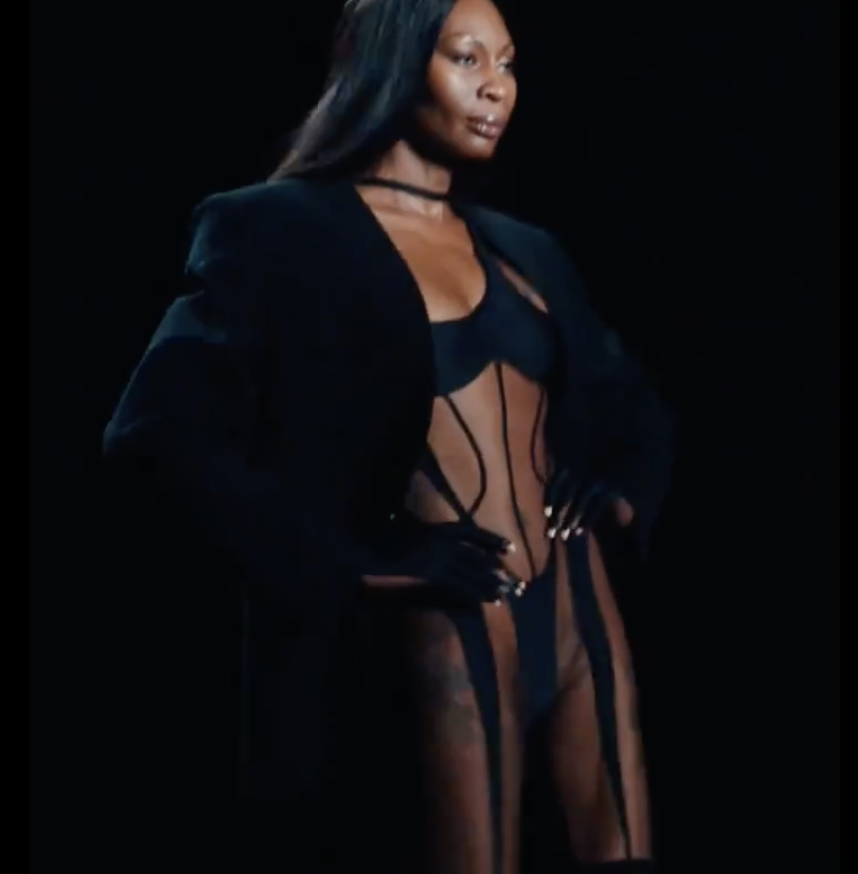
The pulse of fashion is currently in flux. Stuck between uncertain futures, conflicting seasons, and fading trends, designers and brands are searching to find what hits. It's a moment of reorientation that asks, "How do we articulate the now?" Clothing wise, it's a bit all over the map: rehashes of logo mania, dips back into goth and grunge, sharp tailoring, structured oversized silhouettes, and lots and lots of mesh. But where style is taking a moment to settle, the presentation format has a clear frontrunner that many have adopted: the fashion film.
Many houses have been going beyond just filming models on the catwalk, and instead have been creating videos that show off new collections with cinematic narratives, special effects, grand set designs, and celebrity appearances. In short, we're witnessing a merging of fashion and entertainment. Recent fashion films are presenting more intricate and immersive brand identities, capturing beauty in motion that leave lasting impressions.
One of the best pieces to illustrate this trend is Mugler SS21 Part 02 Film (which is my favorite piece of fashion content of the last 10 years, full stop). Directed by Torso Solutions, the fashion presentation goes beyond a runway show, featuring body doubles, creative video editing, and some truly unexpected stunts. Not to mention, the casting is impeccable, with Dominique Jackson's penultimate closing walk going viral across online communities. Mugler made the most of the format, not making a video as a substitution for an in-person runway show, but rather crafting a unique piece of work with an online sensibility, one attune to the style and rhythm of our digital world.
As the current Fashion Month unfolds, more and more brands have released elaborate films to accompany their new collections. Filmed on the Universal Studios lot, Moschino created Lightning Strikes: The Moschino Musical, a fantastical tribute to musical theatre, mid-century glamour, and American diners. Amen Break, the film for Louis Vuitton SS22, feels like a dream sequence from an A24 movie, with dizzyingly expansive sets and multi-tiered cultural references. The film for Richard Quinn AW21 is a 25-minute feature with ballet, miniature dioramas, and dance breaks in the rain that is essentially an ode to Catwoman. These projects transcend into cinema, bringing a broad range of creative mediums into the world of fashion.
The revival of the fashion film reflects how brands are adapting to new audience behaviors that have taken off since the pandemic. There’s a more dynamic use of technology that treats the Internet like an artistic tool, rather than as an archive. Brands are presenting a sense of spectacle tailored for our screens – as opposed to the runway show – that keeps up with the over saturation of content and the subsequent decrease in our attention spans. Overall, brands have reassessed how to make an impact with fashion, and how to keep their audience's attention.
The revival of the fashion film reflects how brands are adapting to new audience behaviors that have taken off since the pandemic. There's a more dynamic use of technology that treats the Internet like an artistic tool, rather than as an archive. Brands are presenting a sense of spectacle tailored for our screens – as opposed to the runway show – that keeps up with the over saturation of content and the subsequent decrease in our attention spans. Overall, brands have reassessed how to make an impact with fashion, and how to keep their audience's attention.
The revival of the fashion film reflects how brands are adapting to new audience behaviors that have taken off since the pandemic. There's a more dynamic use of technology that treats the Internet like an artistic tool, rather than as an archive. Brands are presenting a sense of spectacle tailored for our screens – as opposed to the runway show – that keeps up with the over saturation of content and the subsequent decrease in our attention spans. Overall, brands have reassessed how to make an impact with fashion, and how to keep their audience's attention.
The concept of using film to inflect fashion with wider entertainment value is not new, of course. Designers across the decades have dipped into the world of film and experimented with new ways of presenting their art. In recent times, Rihanna has created the blueprint for this model with Savage X Fenty. By combining a fashion show with musical performances, dance, and interviews, filmed in a studio specifically for the final video, Rihanna has helped further bring fashion into the realm of mass appeal. This play between artistry and accessibility defines the future of the most impactful creative work.
Tracking cultural production throughout this pandemic, we've seen the need to think inventively to create work that feels fresh and relevant. The allure of luxury has been fading for some time, and brands across industries have been scrambling to find ways of making glamour relevant for today. Fashion films have become a preferred method for doing this, but brands are experimenting with all sorts of entertainment mediums, like video games and even the Olympics. These collaborations point to our increasingly fluid world that always asks what’s next – and dares us never to stay stagnant.
From guest contributor Douglas Schowengerdt, Cultural Correspondent, New Moon
|



